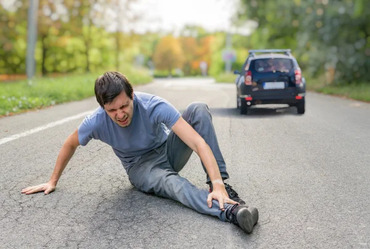Search

Hit and run accidents are one of the most distressing scenarios on the road, leaving victims feeling vulnerable and uncertain about their rights and next steps. These incidents occur when a driver involved in an accident flees the scene without offering aid or providing identification. Understanding the prevalence of hit and run accidents in different regions can help raise awareness and encourage safer driving behaviors. This blog will explore the state with the most hit and run accidents, the common reasons behind these incidents, and how to protect yourself and respond if you become a victim.
According to recent data, California holds the dubious title of the state with the most hit and run accidents. The sprawling urban areas, dense population, and busy highways contribute to a high frequency of vehicular collisions, which can lead to drivers fleeing the scene. As infrastructure improves and car ownership increases, the number of incidents continues to rise, making California a focal point for discussions around hit and run statistics.
In California, hit and run incidents make up a significant portion of all traffic accidents. Statistics indicate that approximately one in five traffic accidents in California results in a hit and run. This alarming rate underscores the importance of understanding the reasons behind these accidents and how to prevent them.
Understanding the reasons for hit and run accidents can help illuminate why these incidents continue to occur at such a high rate, particularly in California. Here are several common factors contributing to hit and run scenarios:
1. Fear of Consequences: Many drivers flee the scene out of fear, particularly if they are unlicensed, uninsured, or driving under the influence. The thought of facing legal repercussions or financial liability often leads individuals to leave the scene.
2. Distraction: Distracted driving is a growing concern on roadways across the United States. When drivers are preoccupied with their phones or other distractions, they may not fully grasp the consequences of their actions, leading them to leave the scene.
3. Lack of Awareness: Some drivers may not realize they have been involved in an accident, especially in crowded urban environments. Minor collisions can happen quickly, with drivers unaware of the impact.
4. Road Rage: Aggressive driving and road rage can escalate quickly, causing some drivers to leave the scene in a fit of anger, rather than taking responsibility for their actions.
5. Socioeconomic Factors: In areas with high unemployment rates or socioeconomic challenges, drivers may perceive the risk of legal consequences as less significant compared to their immediate concerns, prompting a higher likelihood of fleeing the scene.
The consequences of hit and run accidents can be devastating for the victims involved. Individuals who are struck in such an incident may face:
Physical Injuries: Victims can suffer from various injuries ranging from minor bruises to severe trauma that requires extensive medical treatment.
Emotional Trauma: Besides physical injuries, hit and run accidents can leave psychological scars, including anxiety and fear of future interactions on the road.
Financial Burden: Victims often must contend with medical bills, vehicle repairs, and lost wages due to an inability to work in the aftermath of an accident. When the responsible party flees, recovering these costs can be particularly challenging.
If you ever find yourself a victim of a hit and run accident, knowing how to respond can significantly affect your recovery process. Here are key steps to take:
1. Assess Your Injuries: Your safety and well-being should be the top priority. If you are injured or require medical attention, call 911 immediately.
2. Document the Scene: If it’s safe, gather as much information as possible about the accident. Take photographs of the scene, note the time and location, and write down any details you remember about the fleeing vehicle, such as the make, model, and color.
3. Talk to Witnesses: If there are bystanders or other drivers who witnessed the event, ask for their contact information. Their testimony may be crucial in establishing what occurred.
4. Report to the Authorities: Contact the police to file a report. Even if the accident seems minor, it’s important to have an official record of the incident.
5. Notify Your Insurance Company: Report the accident to your insurance provider as soon as possible, as they may cover certain expenses under your policies, such as uninsured motorist coverage.
6. Consult an Attorney: If you face significant injuries or damages from the hit and run, consulting a lawyer who specializes in accident claims can greatly help. They can guide you through the legal process and work to recover any compensation you deserve.
While hit and run accidents can happen to anyone, there are precautionary measures that drivers can take to minimize the risk:
1. Remain Alert: Pay attention to your surroundings when driving. Avoid distractions and remain vigilant for pedestrians, cyclists, and other vehicles.
2. Follow Traffic Laws: Obey speed limits, traffic signals, and street signage. Practicing defensive driving can help prevent accidents from occurring in the first place.
3. Communicate Intentions: Use turn signals and hand gestures to indicate your intentions to other drivers and pedestrians.
4. Encourage Responsibility: Social campaigns and community initiatives promoting responsible driving and awareness of the consequences of hit and run incidents can foster a culture of accountability.
Hit and run accidents are a significant issue in the United States, especially in states like California, where the incident rate is notably high. Understanding the reasons behind these accidents, knowing how to respond if involved, and taking steps to prevent such situations are vital for maintaining road safety.
By being informed and proactive, you can contribute to reducing the occurrence of hit and run accidents, ensuring that our roadways become safer for all. If you or someone you know is impacted by such an incident, don’t hesitate to seek assistance—a dedicated lawyer can make a substantial difference in navigating recovery and justice.